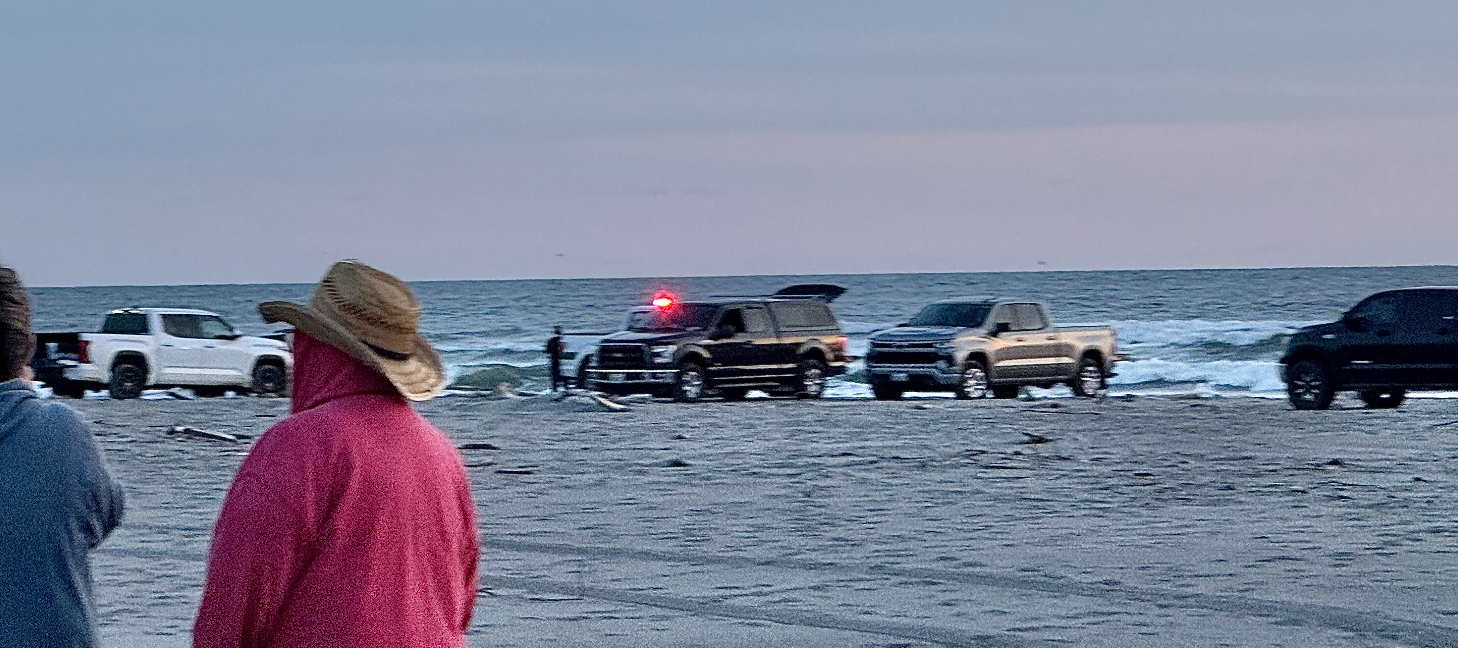More people and calls spark fire levy
Published 1:51 pm Monday, July 22, 2024

- Pacific County Fire District No. 1 Chief Jacob Brundage, center, speaks to firefighters while battling a deadly house fire in 2022. The fire district is seeking a revenue bump, primarily to supplement north end staffing. Mail-in voting is now underway.
LONG BEACH PENINSULA — Along with an array of statewide, congressional, legislative and judicial contests, most peninsula voters will also have the chance to weigh in on a levy being proposed by its local fire district on August’s primary election ballot, which arrived in mailboxes last week.
For Pacific County Fire District No. 1’s top brass, the request to voters to approve lifting its levy lid is seen as a critical step in countering rising call volumes that they say have stretched their firefighters and emergency responders thin up and down the peninsula. If passed, the new funds would enable the fire district to hire four new firefighters-EMTs-paramedics and acquire needed resources and equipment to support a third, 24/7-staffed fire station in Surfside.
PCFD1’s property tax levy would increase from $0.85 to $1.15 per $1,000 of assessed value if the ballot measure is approved next month, with collections to begin in 2025. For a property valued at $400,000, the 30-cent increase being proposed by the fire district would cost that owner about $120 more annually — or $10 per month.
In Washington, state law limits taxing districts from increasing the total property tax levy amount collected from current assessed valuation by more than 1% on an annual basis — known as the “levy lid.” However, districts that are collecting less than their maximum statutory levy rate may ask voters to “lift” the total levy amount collected by more than 1%. The maximum levy rate for fire districts in the state is $1.50 per $1,000 of assessed value.
PCFD1’s levy rate has gradually decreased in recent years, due to higher property valuations and new homes being constructed on the peninsula; in 2023, the levy rate was $0.96 per $1,000.
Rising population, call rate
While the levy rate has decreased, the rate of calls that the fire district has responded to has increased substantially over that same period, according to data provided by PCFD1 Fire Chief Jacob Brundage.
In 2017, the fire district received 2,222 calls. By last year, that number had risen to 2,635 — an 18.6% increase, with about 74% of all calls happening in Ocean Park or further north, such as Surfside or Oysterville.
Over that same period, the Pacific County Auditor’s Office disclosed that there have been nearly 2,900 new voter registrations filed within the 11 voting precincts that comprise the fire district’s political boundary, with most of that growth occurring in several north peninsula precincts. About 500 new building permits have also been issued within PCFD1’s boundary from 2017 through this June, with 75% located in Ocean Park or further north.
As Brundage summarized, this recent population growth and the ensuing higher call volume is well outpacing the 1% yearly increase on property taxes that the fire district is permitted to collect without having to go to the voters to lift the levy lid.
“$1.15 [per $1,000] would make sure that we stay a little bit ahead of that curve and we’re a little more proactive,” Brundage said.
The fire district purchased a house in Surfside for just over $220,000 in 2007, directly adjacent to property that was transferred to the district from the Surfside Homeowners Association decades ago and now holds a three-bay, all-volunteer station. About $100,000 collected through the levy increase would be spent to modify those facilities to accommodate around-the-clock staffing, including constructing a breezeway to connect the house and the station, which are located just feet apart.
Concurrent calls
One of the big stressors to PCFD1’s operations amid the rising call volume is the growing number of concurrent incidences, which is when two or more calls are in progress at the same time. There were 270 concurrent incidents in 2018, which rose to 350 in 2023 — a nearly 30% increase.
The most disruptive incidents are when multiple calls are ongoing in the same area, especially in the Ocean Park and north peninsula areas, which can exhaust resources at the Ocean Park fire station. When those incidents occur, the crew staffed at the Seaview fire station are repositioned to the midway section of the peninsula to cover the entirety of the fire district in the event of another call.
“Basically, when we have multiple calls going on, we pull resources from one area and it creates these holes and vulnerabilities,” Brundage said.
There were 161 incidents last year when firefighters with the Seaview station had to be repositioned to cover for the Ocean Park station, and just 18 times where firefighters with the Ocean Park station had to cover for the Seaview station.
Response times also shoot up when a concurrent incident occurs and the other station is needed. What takes a crew from the repositioned Seaview station an average of nearly 12 minutes to respond to a north peninsula call would take a crew responding from the Surfside just 2-5 minutes to that same call.
By having a fully staffed Surfside station to further cover north peninsula calls, Brundage said it would drastically improve response times and lower the frequency of having to reposition crews and resources from Seaview and leave the southern end of the peninsula vulnerable. He projects that it would reduce the need for the Seaview crew to leave their primary area by 75% from current levels.
Although it wasn’t within PCFD1’s jurisdiction, he cited the devastating fire at the Ilwaco Landing this January as one incident where the fire district would have one of the first crews on the scene to respond. But PCFD1 was responding to four other aid calls at the same time, and the first available mutual-aid engine didn’t show up until more than 30 minutes into the incident — which came out of the Ocean Park station.
“This is about being more proactive [rather] than waiting until something happens — you have a large fire, or even if we just have two or three calls and then someone ended up having to wait half an hour for a fire engine and they’re going ‘Why did it take so long?’ and we’re like ‘Well, we knew that was going to happen, it was just a matter of when and it just happened a little sooner,’” Brundage said.
“That’s not fair to the public. They should at least know what the issues are that are going on, and then give them an opportunity to vote on what they feel is acceptable or not acceptable. That’s the role of this [levy proposal].”





